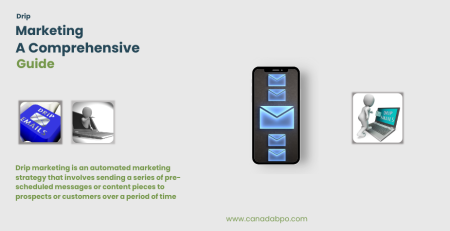In today’s highly competitive business landscape, simply having a good product or service isn’t enough. To stand out from the competition and build a strong connection with your target audience, you need a well-defined brand positioning strategy. Brand positioning helps shape how consumers perceive your brand, differentiates you from competitors, and ultimately influences purchasing decisions.
In this blog post, we’ll explore what brand positioning is, why it matters, and how you can develop an effective positioning strategy to build a powerful, memorable brand.
What is Brand Positioning?
Brand positioning refers to the process of establishing your brand in the minds of consumers in a unique and compelling way. It involves creating a distinctive space for your brand in the marketplace, one that sets it apart from competitors and aligns with your target audience’s needs, desires, and values.
At its core, brand positioning answers the question: “What makes your brand different, and why should customers choose you over others?”
Effective brand positioning is more than just a tagline or slogan—it’s a strategic decision that defines how your brand will be perceived. It shapes your brand’s identity, messaging, and overall market presence.
Why is Brand Positioning Important?
Your brand’s position in the market plays a crucial role in shaping how customers see you. A well-positioned brand helps:
- Differentiate You from Competitors: In crowded markets where multiple companies offer similar products or services, brand positioning allows you to stand out. It highlights your unique selling points (USPs) and communicates why customers should choose you over others.
- Create a Strong Connection with Your Target Audience: When you position your brand effectively, you speak directly to your target audience’s specific needs, values, and pain points. This connection fosters customer loyalty and encourages repeat business.
- Enhance Brand Recognition and Recall: By carving out a clear and distinct space in your industry, your brand becomes more recognizable and memorable. Customers are more likely to remember you and think of you first when they need the product or service you offer.
- Support Pricing and Profitability: A strong brand position allows you to command higher prices and justify premium offerings. When customers see your brand as valuable and differentiated, they’re often willing to pay more for your products or services.
- Build Long-Term Brand Equity: Effective brand positioning helps build brand equity, which is the perceived value of your brand over time. A strong brand with positive associations can increase customer trust, expand market share, and drive long-term business growth.
Key Elements of Brand Positioning
To develop a successful brand positioning strategy, you must focus on several key elements:
1. Target Audience
A clear understanding of your target audience is the foundation of any brand positioning strategy. You need to know who your ideal customers are, what they care about, and what problems they need solved. This information allows you to tailor your messaging and positioning to align with their specific preferences and needs.
2. Unique Value Proposition (UVP)
Your unique value proposition (UVP) defines what makes your brand different and better than competitors. It’s the unique benefit that your product or service offers, and it answers the question: “Why should customers choose you over others?”
Your UVP should be clear, compelling, and directly related to the needs and desires of your target audience. It should highlight the specific benefits of your offerings that are unavailable or less effective in competing brands.
3. Competitive Analysis
Understanding your competitors is critical to effective brand positioning. You need to identify who your key competitors are, how they position themselves, and where gaps exist in the market. Competitive analysis helps you determine how to differentiate your brand in ways that your competitors aren’t addressing.
Look for ways to position your brand based on:
- Superior product quality
- Better customer experience
- More affordable pricing
- Niche focus or specialization
- Innovation or sustainability
4. Brand Promise
Your brand promise is a statement that reflects the value and experience customers can expect from your brand. It reinforces your UVP and assures customers that you will deliver on your promises consistently. A strong brand promise builds trust and fosters brand loyalty.
5. Brand Personality and Tone
The personality and tone of your brand should align with your target audience and the market you serve. For example, a luxury fashion brand may adopt a sophisticated, aspirational tone, while a tech startup might embrace a playful, innovative personality. Your brand’s personality should resonate with your audience and differentiate you from competitors.
6. Positioning Statement
A positioning statement is a concise, clear articulation of how you want your brand to be perceived by your target audience. It should summarize your UVP, target audience, and key differentiators in one or two sentences. A strong positioning statement guides your messaging and ensures consistency across all marketing and communication efforts.
Here’s an example of a positioning statement: “For busy professionals who value convenience, [Brand Name] offers high-quality, pre-packaged meals that are quick, nutritious, and delicious—helping you eat well even on the busiest days.”
How to Develop an Effective Brand Positioning Strategy
Creating a successful brand positioning strategy involves a deep understanding of your brand, target audience, and market dynamics. Follow these steps to build a brand positioning that stands out:
1. Conduct Market Research
The first step in positioning your brand is to understand your target market. Conduct thorough market research to gain insights into:
- Customer demographics, behaviors, and preferences
- Industry trends and emerging opportunities
- Competitor strengths, weaknesses, and positioning
This research helps you identify opportunities to differentiate your brand and craft messaging that resonates with your audience.
2. Identify Your Brand’s Strengths
What does your brand do better than anyone else? Identify the key strengths, features, or benefits that make your brand stand out. These could be anything from superior product quality, outstanding customer service, a commitment to sustainability, or an innovative approach.
Once you’ve identified your strengths, incorporate them into your brand’s positioning strategy.
3. Craft a Unique Value Proposition
Your UVP should clearly articulate the specific value your brand offers that sets you apart from competitors. Focus on the unique benefits your product or service provides to your target audience and ensure that it addresses their specific needs or pain points.
4. Test Your Positioning
Before fully committing to a brand positioning strategy, test it with your target audience. Gather feedback through surveys, focus groups, or interviews to determine whether your positioning resonates with customers and whether it effectively differentiates your brand from competitors.
5. Consistency Across Channels
Once your positioning strategy is finalized, ensure consistency across all touchpoints, including your website, social media, marketing materials, and customer interactions. Consistent messaging helps reinforce your brand’s position in the minds of your audience and builds brand recognition.
Examples of Strong Brand Positioning
Some of the world’s most successful brands owe much of their success to strong brand positioning. Here are a few examples:
- Apple: Positioned as the leader in innovation and design, Apple appeals to tech-savvy consumers who value cutting-edge technology and sleek aesthetics. Their tagline, “Think Different,” embodies their unique positioning in the technology market.
- Nike: Nike’s brand positioning centers around inspiration and empowerment. With the tagline “Just Do It,” Nike positions itself as the go-to brand for athletes and fitness enthusiasts, encouraging individuals to push their limits and achieve greatness.
- Coca-Cola: Coca-Cola has successfully positioned itself as a brand associated with happiness and togetherness. Their marketing focuses on emotional connections and positive experiences, helping them maintain a dominant position in the beverage industry for decades.
Brand positioning is a powerful tool that can help your business stand out in a crowded marketplace. By defining your unique value, understanding your target audience, and differentiating yourself from competitors, you can build a brand that resonates with consumers and creates long-term loyalty.
At Canada BPO Services, we help businesses develop effective brand positioning strategies that drive growth and customer engagement. If you’re looking to create a powerful, memorable brand, contact us today!










